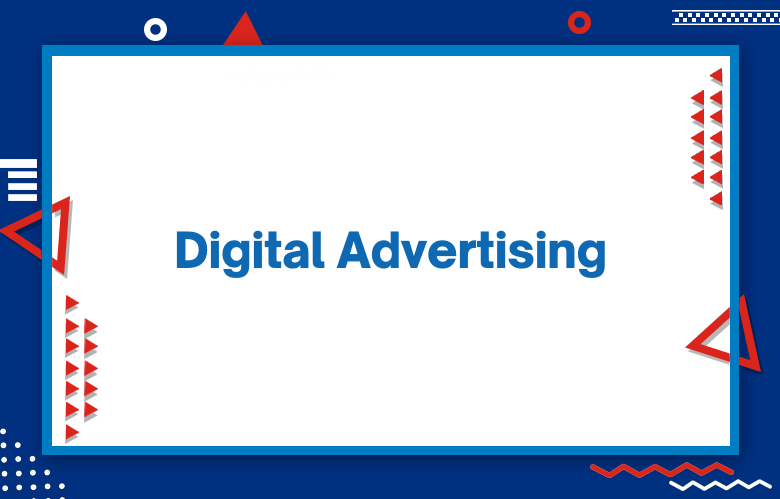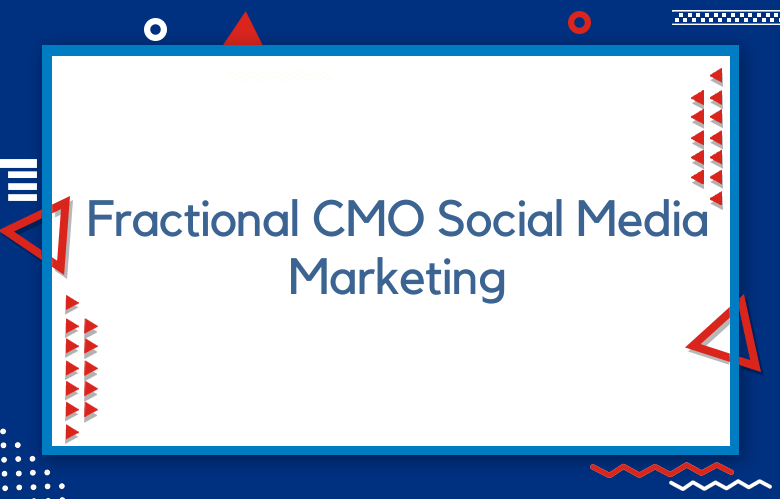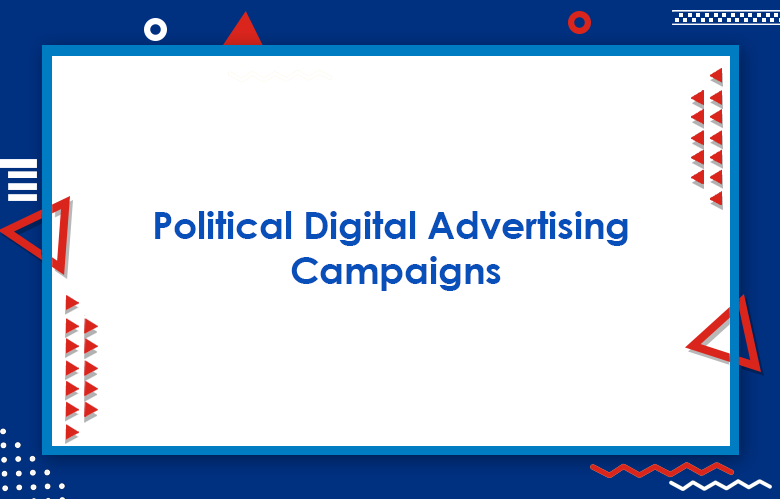Digital Advertising: The Best Practices For Digital Advertising

Digital Advertising is a rapidly growing field that has become an essential part of digital marketing strategies for many businesses. Digital advertising offers various opportunities to reach and tell your target audience about your products or services. There are some best practices when managing digital ads.
Digital advertising offers various opportunities to reach and tell your target audience about your products or services. You can tailor ads for each platform’s unique demographic profile when you advertise on social media networks like Facebook, Twitter, YouTube, and Google+.
However, some best practices for managing digital advertisements still apply to all platforms that work well across different demographics.
What Is Digital Advertising?
Digital advertising uses search engine marketing, email advertising, online display advertising (including in-game), and mobile advertising to help generate interest in a product or service.
Digital advertising is the best way to spread your message and get more customers.
Digital Advertising uses the Internet, mobile, and video devices to display advertisements. It can be done through online marketing, where advertisers pay for ads on a website or app.
Digital Advertising is a lot more than just advertising on the Internet. It’s an umbrella term for advertising tools and strategies that use digital technology to communicate with consumers.
Digital advertising promotes products or services using digital technologies, mainly on the Internet, including mobile phones, display advertising, and other digital mediums.
How Did Digital Advertising Begin?
Digital marketing has a long history. In the early days, computers were used to send bulk emails.
Digital advertising began in the late 1990s. Companies like DoubleClick and Yahoo! saw an opportunity to bring the Internet into their businesses by placing ads online.
Digital advertising began when the first banner ad was placed on Hotwired in 1994. This page, which hosted an ad for Volkswagen, displayed a long line of text that scrolled down the screen when it reached the bottom of the browser window.
How is digital advertising different from traditional advertising?
Traditional advertising is just a picture of something people can see, like TV or newspapers. Digital ads are different because they’re made with code and then displayed on computers and phones.
In today’s digital advertising world, there are so many different paths to take. It was all about location and placement; brand recognition is critical with digital.
Traditional advertising is different because it’s targeted toward a particular demographic. Digital can target specific users based on age, gender, and location.
Digital advertising is a lot cheaper than traditional advertising. For example, buying ads on Facebook for just $1 per day is possible!
Traditional adverts are usually found in newspapers, magazines, and TV. Digital advertising is another way to promote a brand or product. It includes internet banner ads, search engine marketing (SEM), email campaigns, and video and mobile advertising.
Types of Digital Advertising
Digital advertising falls into two broad categories: online and mobile. Online is further classified as display, video, social media, and search (Google AdWords). Mobile includes SMS or text messaging and push messages to apps on the phone, such as news updates.
Did you know that there are a variety of digital advertising options available? From social media to email marketing and video ads.
- Display Advertising-these ads are shown on a web page and usually take up the whole screen.
- Search Engine Marketing- this form of advertising is based on keywords, typically in search engine results pages
- Email Marketing- this type of marketing is done by sending emails to potential or past customers with information about your products or services.
- Social Media Marketing (SMM)- SMM is often used for branding purposes, but it can also be used for the sales promotion
- Banner Ads
- Text Links
- Sponsored Stories
- Google Adwords/PPC Campaigns
- Facebook Advertising and Targeting
- Sponsored Posts on Social Media
- Video Advertising
- Paid Search Marketing (PPC)
- Remarketing
- Search Engine Marketing
- Social Media Marketing
- Email Marketing
Digital advertising uses media and broadband internet connections to deliver online or mobile advertisements.
There are four types of digital advertising:
Search Engines:
Links can be used within a website through pop-ups, banners, videos, and sponsored links on websites that let advertisers purchase recognizable keywords so their product ads will show up in searches when someone does a Google search for “pizza near me.”
Display Advertising:
Ads might be displayed at the top of a webpage’s content and typically at the bottom of each page (called ‘banner’ or ‘floating’ ads) – Social Media & Messaging Sites – People who sign up to these sites may see targeted advertisements.
Banner ads:
These are placed on websites that may look like content but are advertisements.
Monetizing Ads:
Place an ad at the bottom of a website to catch people who browse for too long and want to get out quickly.
How does digital advertising work?
Digital advertising is one of the quickest and cheapest ways to increase your company’s visibility. As with any advertising campaign, you’ll first need to develop a slogan for your business. This way, when people see an ad, they will know who it’s from to follow through on their leads.
It starts by choosing what media channels to use for television or radio advertisements or online digital ads such as banner ads and YouTube pre-roll ads. You place an order with the media company and, under contract, agree on a specific amount for each click that lands on your landing page in return.
Digital advertising is simply using keywords to target potential consumers on the Internet.
Recently, some advertisers looking for more digital signage have started incorporating specific unsavory tactics such as flashing and pop-under advertisements. These are some of the most disruptive ads available because ad blockers cannot block them and actively wait until a viewer leaves a video before displaying their content rapidly – spamming, blindsiding, and otherwise irritating anyone who sees them.
For this reason, these ads are now being labeled as Thieves’ Ads by consumers everywhere to help identify them against all other legitimate online marketing techniques.
So if a person wants to advertise, they must pay an intermediary (the ad agency) to place the advertisement. They’ll use demographic data and algorithms to determine where and when ads should show up so many people in those demographics will see it for the cheapest amount possible.
They buy media space from broadcast TV stations, newspapers, magazines, billboards, and social sites like Facebook and Twitter. They primarily use cost per thousand impressions or ‘CPM,’ which means how much you have to pay for 1000 views of your advert.
This method targets advertising more at specific tastes so that only those who fit into their selected demographics see it expensively but efficiently. All this information is then processed through Matlab scripts with particular.
Why use Digital Advertising?
Digital advertising is the most obvious place to get your products in front of consumers.
It’s no secret that when purchasing media, nothing beats live TV or radio to simultaneously reach the total number of viewers. However, TV and radio ads have a significant downside: they’re expensive. Investing heavily upfront may be impossible for small-to-medium businesses with limited resources.
Digital Advertising is an excellent way of advertising for high-speed multiple touchpoints on sites like Facebook, Google, and Instagram.
Digital advertising messages break up the person’s browsing experience. They can communicate with that person much more casually since their product is unavoidable in front of them.
It increases the likelihood that it will be what they want to see when they reach their destination page. There is also information relating to conversion rates that compare cost per acquisition with other forms of advertisement, proving this method is one of the most effective ways for marketers to market their products or services online.
Digital Advertising Metrics
- Number of impressions
- Click-through rate
- Cost per click (CPC) and cost per thousand impressions (CPM)
- Cost per conversion
- Unique Visitors
- Page Views
- Average Session Duration
- Bounce Rate (percentage of visitors who leave the website after viewing only one page)
- Time on Site (duration in seconds that a visitor spends on your site before leaving)
- Reach
- Frequency
- Engagement rate
- Clicks
- Click-through Rate: The percentage of people who click on an ad
- Cost Per Click (CPC): How much it costs to show your advertisement one time, usually in cents or dollars
- Click-Through Rate (CTR): The number of clicks divided by the number of impressions
- Impressions: Total number of times that a person has seen your ad
Digital Advertising bidding models
- Cost per click, or cost per acquisition (CPA)
- Cost-per-click (CPC) bidding models
- Cost per thousand impressions (CPM) bidding models
- Pay-per-view (PPV) bidding models
How much does digital advertising cost?
Digital advertising costs can vary depending on the platform that you’re using. For example, if you advertise on Google AdWords, your ads will cost $2 per click.
Digital advertising can get pretty expensive. The more you spend, the more people will see your ad and potentially become customers.
To get a reasonable estimate of how much you would spend on digital advertising, please fill out the following form.
In digital advertising, estimating how much you will spend isn’t easy. If you want more information about digital ad prices, contact me here.
Many factors can affect the cost of digital advertising. For example, the price will depend on your reach and engagement rates if you want to advertise on Facebook.
How to create a digital ad strategy
If you want to create a digital ad strategy, I recommend considering your target audience. You need to understand them and the problems they face.
Finding your target audience is the first step in creating a digital ad strategy.
These tips help you with the creation of a digital ad strategy. First, include the target audience in your planning and keep them involved. Next, don’t forget that it’s essential to identify what you want before creating your ads.
I recommend starting by analyzing your competitors’ ads. Figure out what they’re doing right and wrong, and then make changes to improve your campaign.
What Are the Digital Advertising Formats?
One of the most common ad formats is banner ads. Banner ads are often used on websites because they’re easy to insert, and publishers don’t have much control, allowing advertisers to get what they need at a low price.
Banner Ads are rectangular images that can be placed on a webpage or mobile app. Banner ads are shown on many sites and usually link to the advertiser’s website.
Digital Advertising Best Practices
- Define your target audience
- Determine the best platforms to advertise on
- Research your competition and their ads
- Brainstorm creative ideas for ads tailored to your target audience and platform(s) of choice.
- Create a budget with what you’re willing to spend on advertisements, then estimate how much you’ll make in return.
- Determine your objectives
- Creation of a marketing strategy that aligns with your goals and budget
- Define success metrics for the campaign, including the number of impressions, clicks, conversions, etc.
- Set up tracking tools to measure performance in real-time
- Implement A/B testing to improve conversion rates
- Choose a social media platform and build an organic following
- Create content that is engaging, entertaining, or informative
- Develop a budget for your campaign and stay within it
- Use the correct targeting to reach your desired demographic
- Be consistent with posting on all platforms- don’t post once on one channel and then not on another
- Create a digital marketing plan
- Ensure you have the right goals for your campaign and know how to measure success.
- Include video in your strategy.
- Test and track different types of ads to see what works best for your business
- Use ad extensions, like site links or call-only campaigns, when possible
- Develop a digital marketing strategy
- Engaging the audience on social media channels
- Create engaging content that attracts and retains customers
- Make sure you have suitable types of ads for different platforms, including Facebook, Instagram, Twitter, LinkedIn, and Google Adwords
- Use ad retargeting to increase customer engagement
Digital Advertising Frauds
- Online advertising fraud is a scam in which the perpetrator creates fake websites to generate fraudulent ad clicks.
- This makes it seem like the ad campaign is more successful and can lead to an increased budget for that campaign.
- The perpetrators typically use bots or human proxies but may also use malware, social engineering techniques, or other methods.
- A study by White Ops found that botnets were responsible for up to $6 million in daily losses.
- Digital advertising fraud is increasing.
- Fraudulent ads can be delivered through the Internet, mobile apps, and TV
- The most common type of fraudulent ad is a “malvertising” campaign that runs on social media sites like Facebook or Twitter
- Malvertising campaigns work by delivering malicious ads to users who click on them
- These ads will then infect the computer with malware or ransomware
- Digital advertising fraud is a type of online ad fraud that takes place when an advertiser pays for the delivery of clicks to their ads but not for the actual number of impressions
- A click-fraudster might have access to more than one IP address and could use these addresses to generate false clicks on advertisements
- The types of digital advertising fraud are domain spoofing, cookie stuffing, click injection, fake traffic generation (bots), phantom traffic generation (click farms)
- Domain spoofing occurs when someone registers domain names that look similar or identical to another site’s name to attract visitors looking for the other place.
- Ads that look like messages from friends or family and ask for personal information
- Fake news sites with sensationalist headlines
- Pop-up ads that appear on your screen without warning
- Sites that offer free downloads of software but require you first to download a file called “adware,” which can be used to monitor your computer activity
Digital Advertising Challenges
- The Internet and digital platforms have disrupted the ad industry
- Ad blockers are on the rise as more people use them to avoid ads online
- There is increased pressure for brands to connect with their customers in a meaningful way
- Ad blockers are the new norm
- There’s too much noise on social media and in email inboxes
- Ads aren’t targeted enough to be effective
- People lack trust in digital ads because they’re not transparent about where their data is going.
- Digital advertising is not a new concept, but it’s constantly changing
- Platforms like Facebook and Instagram are now the dominant digital ad channels
- The need for advertisers to create more engaging content to generate more significant ROI
- There are many ways that companies can use digital ads, including video, mobile, social media, etc., but there are also challenges, such as creating the right message and targeting customers with messages they want to see
- Traditional media is losing its influence
- Consumer attention span has decreased from 12 seconds to 8 seconds since 2000
- Consumers are moving away from traditional advertising methods such as TV, radio, and print.
- People are consuming more content on their mobile devices than ever before
Digital Advertising Trends for 2022
- Digital advertising will be more personalized
- Ads will be more interactive, with the ability to play games or see video content.
- Advertising on social media will take a more significant share of budgets as it becomes even more popular.
- People are becoming less tolerant of ads interrupting their experience, so advertisers must get new marketing methods without being invasive or annoying.
- More people will be using ad blockers.
- Social media platforms will continue to play a significant role in digital advertising.
- Digital advertising budgets are expected to grow by 10% over the next five years, with mobile and video ads leading the way.
- There’s been an increase in interest for “native” ads on social media as they’re more targeted than traditional banner ads.
- Digital advertising will be more targeted and personalized
- There will be a shift from traditional to digital media
- Programmatic buying of ads will increase
- Ad blockers are expected to become even more popular, with some estimates suggesting that they may reach as high as 50% of all internet users by 2022
- Digital marketing will be more personalized to the individual’s preferences and devices.
- The number of people using ad blockers will continue to grow, but advertisers are developing new strategies to combat this.
- More ads will be interactive to keep user attention longer
- Ads on mobile devices will become more common as internet usage shifts away from desktop computers
- Digital ads will grow from $200 billion in 2017 to $260 billion by 2022
- The shift from desktop to mobile will continue, with mobile accounting for more than 50% of all digital advertising spending by 2022
- Social media and search engine ads are expected to account for the majority of digital ad spending, as they have since 2013
- Programmatic advertising is projected to increase its share of total digital advertising spend from 28% in 2017 to 29% in 2022
- A new form of advertising will emerge on social media- sponsored content
- Companies will use AI to target ads at users based on their interests and to browse the history
- Ads will be less disruptive, instead of becoming part of the user experience with video ads that are muted with a single tap
- Mobile advertising will overtake desktop advertising
- More ads will be personalized, with more targeting options and better accuracy
- Advertisers will use AI to create advertisements that are tailored specifically for you
- There will be an increase in cross-device tracking so that advertisers can track your behavior across all of your devices
- More ads will be personalized to the individual
- Ads will be more interactive, with a focus on video and augmented reality
- The industry as a whole is expected to grow by $10 billion in the next five years
- Interactive ads that respond to your touch
- Ads on the street, in public spaces, and even inside buildings
- 3D billboards with augmented reality features that interact with you
- Artificial intelligence will be used to create personalized ads for specific audiences
The Future of Digital Advertising
The future of digital advertising is a bright one. The explosion of the Internet has led to an influx of companies trying to advertise their products and services online, but with so many options, it’s hard to know which ones are worth paying attention to.
I predict that the future of digital advertising is going to be exciting.
The future of digital advertising is a bit hazy. Brands have trouble figuring out how to reach their customers effectively, and consumers have become numb to ads online.
Digital Advertising has been a long way since it was first used. Instead of paying for print ads in magazines and newspapers, companies can create ad campaigns at little or no cost.
The future of digital advertising is programmatic.
Programmatic Digital Advertising
Programmatic digital advertising, or RTB (Real-Time Bidding), is a highly automated process enabling advertisers to bid for ad impressions in real-time.
Programmatic advertising is the only future of digital marketing. It uses data to deliver ads that are customized for each viewer.
Programmatic digital advertising is a way to customize ads based on a user’s preferences. It uses data from the client and users to decide what kind of ad is sent out.
Programmatic digital advertising is a great way to get the most bang for your buck. It’s a sophisticated and dynamic process that maximizes the number of people who see your ads.
Conclusion:
Digital advertising is a subset of marketing that uses digital channels to deliver advertisements. A range of platforms is available for advertisers, such as mobile devices, social media networks, and video games.
These channels can target consumers in specific demographics or with particular interests, making it an effective way to engage more people at once. And because ads are delivered digitally rather than through traditional TV commercials or print newspaper ads, they’re often cheaper too! If you want more information about how your business could benefit from digital advertising solutions, contact me today!
We have defined digital advertising and its different forms. The next step is to apply it to your marketing strategy. Contact us if you want help with that!



